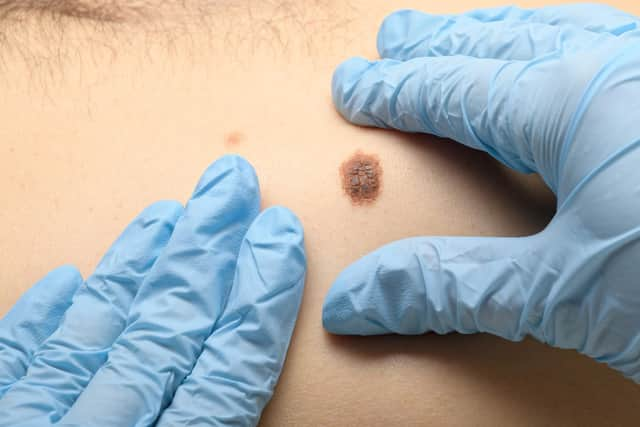How often should you check your skin for cancer? As Sarah, Duchess of York, is diagnosed with melanoma


In July 2023, the 64-year-old had an eight-hour mastectomy – but unfortunately last month, during the follow-up surgery, dermatologists had to remove several moles, finding one to be malignant melanoma.
Despite this diagnosis, the mother of Princesses Beatrice and Eugenie has said in a post on Instagram that she is in “good spirits” and “grateful for the many messages of love and support”.
Advertisement
Hide AdAdvertisement
Hide AdAccording to Cancer Research UK, melanoma accounts for 4% of all new cancer cases, which makes it the fifth most common form of cancer in the UK. Over the past 10 years, diagnosis has increased by 32%, including rates in females increasing by more than 27% and males by almost 38%.


Every year, this has led to at least 2,300 melanoma skin cancer deaths in the UK, which is more than six patients each day.
Here’s how to check for signs of melanoma on your skin.
What are the warning signs of melanoma?
Dr Zulqarnain Shah, medical director and GP at SSP Health, said there are several warning signs of melanoma that we can all be on the lookout for, “which include changes in the size, shape, colour or feel of a mole or other area of skin. You can always use the ABCDE checklist to help you spot them:
“A for asymmetry: the two halves of the mole do not match. B for border: the edges of the mole are irregular, blurred or jagged. C for colour: the mole has different shades of brown, black, red, pink, white or blue. D for diameter: the mole is larger than 6mm across. E for evolving: the mole changes over time in any way.
Advertisement
Hide AdAdvertisement
Hide Ad“Also, keep an eye out for moles that look different to the rest of your moles or stand out as unusual.”
How should we check our skin?
You should be checking your skin regularly, ideally at least once a month.
“The easiest way to do so is to use a mirror or ask someone else to help you check areas that are hard to see, such as your back, scalp, ears and genitals. Keep an eye out for any new or changing moles or marks on your skin and follow the ABCDE checklist. If you notice anything unusual, get in touch with your GP as soon as possible,” said Shah.
How often should we be getting checked?
There is no set rule for how often you should get checked by a GP or a dermatologist (skin specialist).
Advertisement
Hide AdAdvertisement
Hide Ad“It depends on your personal risk factors, such as your skin type, family history, sun exposure and number of moles. Some people may need to get checked more often than others. If you are worried about your risk of melanoma, talk to your GP. They can advise you on how often you should get checked and refer you to a dermatologist if needed,” said Shah.
What should we do if we notice anything concerning?
“If you notice any signs of melanoma or any unusual changes in your skin, do not ignore them or wait for them to go away. See your GP as soon as possible,” Shah added.
“They will examine your skin and ask you some questions about your symptoms and medical history. They may also take a photograph of your mole or mark and send it to a dermatologist for further assessment. If your GP thinks you may have melanoma, they will refer you to a dermatologist urgently, usually within two weeks who will confirm the diagnosis and discuss the treatment options with you.”
Can we prevent melanoma?
“Melanoma is mainly caused by exposure to ultraviolet (UV) radiation from the sun or artificial sources, such as sunbeds. The best way to prevent melanoma is to protect your skin from UV damage,” said Shah.
Advertisement
Hide AdAdvertisement
Hide Ad“You can do this by avoiding sunburn and staying in the shade when the sun is strongest (between 11am and 3pm), wearing sunscreen with at least SPF 15 and four or more stars and reapplying it regularly, wearing protective clothing, such as a hat, sunglasses and long sleeves and avoiding sunbeds and tanning lamps.
“You can also reduce your risk of melanoma by being aware of your skin and checking it regularly for any changes. If you have any concerns about your skin or moles, see your GP as soon as possible.”
Comment Guidelines
National World encourages reader discussion on our stories. User feedback, insights and back-and-forth exchanges add a rich layer of context to reporting. Please review our Community Guidelines before commenting.